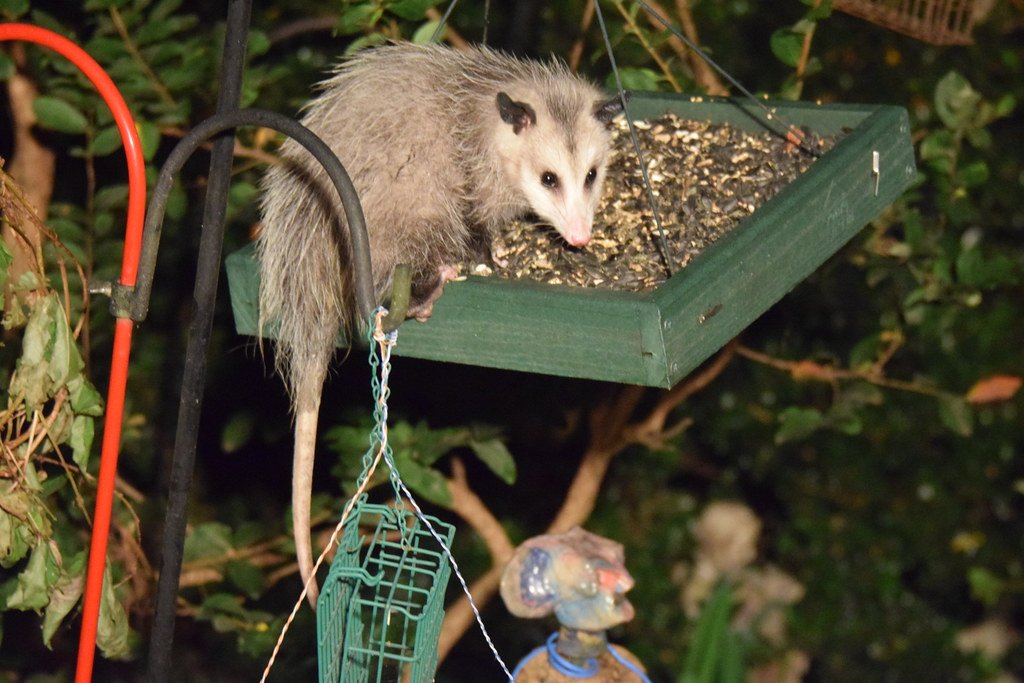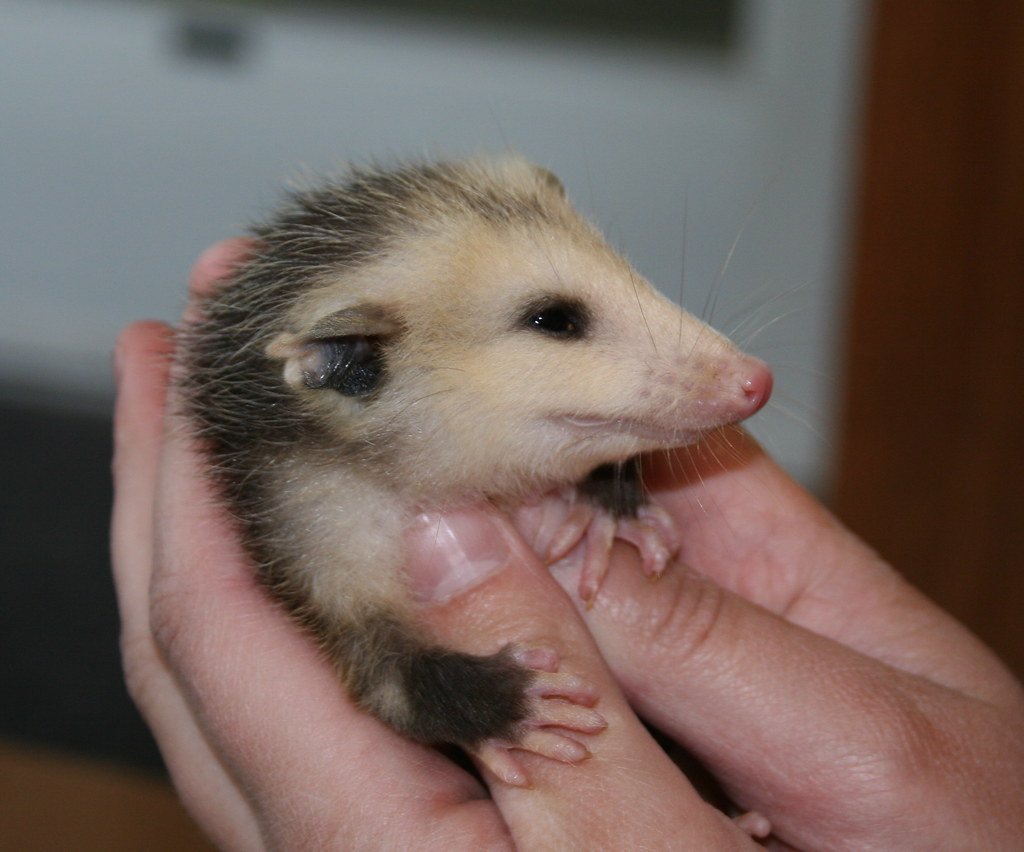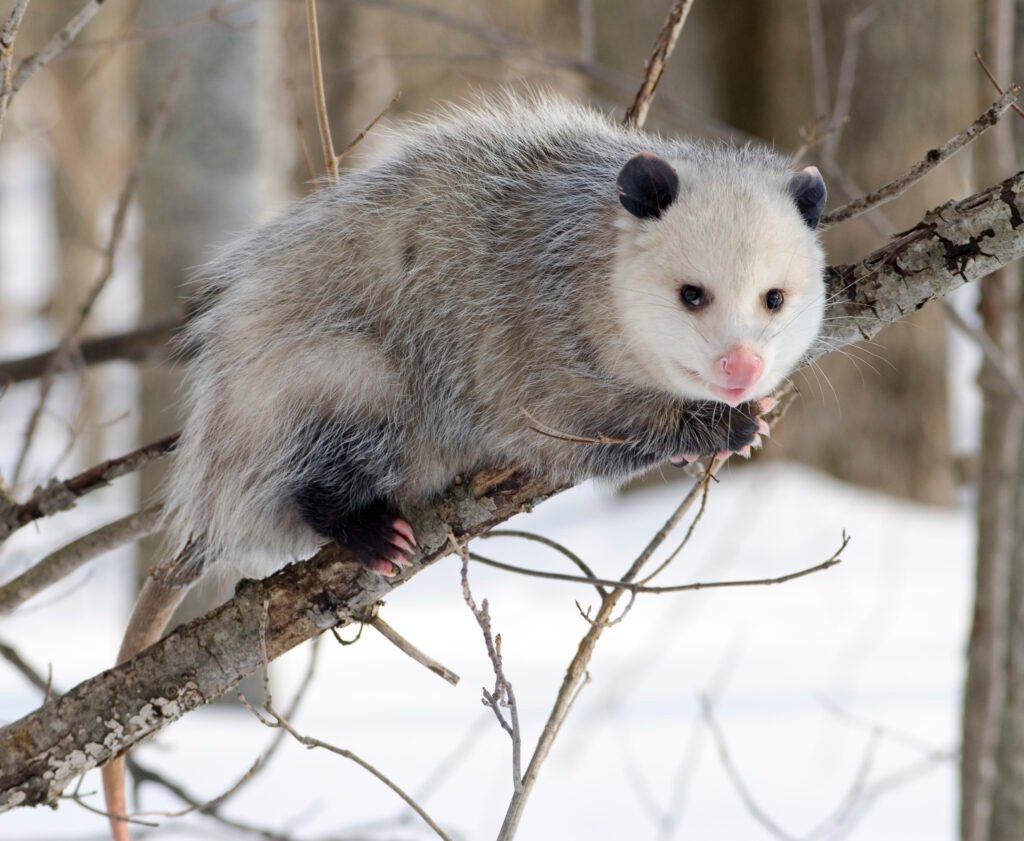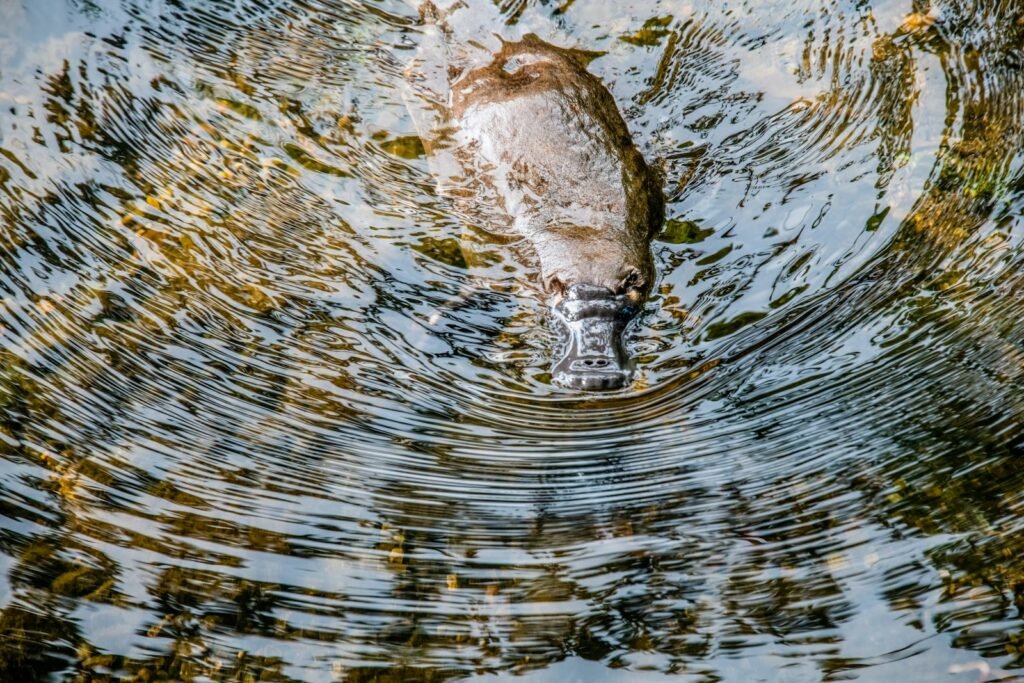In the dead of night, when most creatures flee at the sight of a foaming, snarling raccoon, one marsupial stands its ground with an almost supernatural confidence. The humble opossum, often dismissed as North America’s scruffiest survivor, harbors a secret weapon that would make even the most advanced medical laboratories envious. While rabies terrorizes the animal kingdom and strikes fear into pet owners worldwide, opossums waltz through life with an immunity so powerful it borders on miraculous. This isn’t just another quirky animal fact—it’s a biological phenomenon that’s reshaping our understanding of disease resistance and offering tantalizing clues for future medical breakthroughs.
The Marsupial Marvel That Defies Death

Opossums possess what scientists call a “natural immunity” to rabies that’s so robust it’s practically unheard of in the mammalian world. Unlike their furry counterparts who succumb to this deadly virus with terrifying regularity, opossums seem to have cracked nature’s code for ultimate protection. This immunity isn’t partial or temporary—it’s a complete biological shield that has evolved over millions of years.
The secret lies in their uniquely low body temperature, which hovers around 94-97°F compared to the typical 98.6°F of most mammals. This seemingly minor difference creates an environment where the rabies virus simply cannot thrive or replicate effectively. Think of it as trying to grow tropical plants in a refrigerator—the conditions just aren’t right for survival.
What makes this even more remarkable is that opossums regularly encounter rabid animals in their nocturnal adventures. They scavenge in the same territories, drink from the same water sources, and often cross paths with infected raccoons, bats, and skunks. Yet they remain untouchable, like having a permanent force field against one of nature’s most feared diseases.
The Temperature Defense System

The opossum’s lower body temperature isn’t just a random quirk—it’s a masterpiece of evolutionary engineering. Most viruses, including rabies, require specific temperature ranges to replicate and spread throughout a host’s nervous system. The rabies virus thrives in the warm, cozy environment of a typical mammalian body, but in an opossum’s cooler internal climate, it’s like trying to start a fire in a damp cave.
This temperature difference affects more than just viral replication. It influences enzyme function, protein folding, and cellular metabolism in ways that create multiple barriers to infection. The opossum’s immune system operates at peak efficiency within this cooler range, while invading pathogens struggle to gain a foothold.
Research has shown that even when rabies virus is artificially introduced into opossum tissue samples, the viral particles fail to multiply at the rate necessary for successful infection. It’s nature’s equivalent of a built-in antiviral program that runs 24/7 without requiring any conscious effort from the animal.
Evolutionary Wisdom in Action

The opossum’s rabies immunity didn’t develop overnight—it’s the result of millions of years of evolutionary pressure and natural selection. As one of the oldest surviving mammalian lineages, opossums have had ample time to develop sophisticated defense mechanisms against the diseases that have plagued other species. Their ancestors faced countless viral threats, and only those with the most effective immune responses survived to pass on their genes.
This evolutionary journey has produced an animal that’s essentially a living laboratory of disease resistance. While other mammals evolved speed, strength, or camouflage as survival strategies, opossums invested heavily in biological armor. Their immune system is like a Swiss Army knife of defense mechanisms, with rabies immunity being just one of many tools in their survival toolkit.
The remarkable thing is that this immunity appears to be hardwired into their genetic code. It’s not learned behavior or acquired immunity—it’s an innate characteristic that every opossum carries from birth. This suggests that the trait was so advantageous that it became fixed in their gene pool, making it virtually impossible for rabies to gain a foothold in opossum populations.
The Cellular Battleground

At the microscopic level, an opossum’s cells wage war against potential invaders with weapons that would make military strategists jealous. Their white blood cells are particularly adept at recognizing and destroying foreign genetic material before it can establish itself. When rabies virus attempts to infiltrate neural tissue, it encounters a cellular defense system that’s been fine-tuned over millennia.
The opossum’s neurons themselves seem to be fortified against viral hijacking. Unlike human or canine nerve cells, which become highways for rabies to travel to the brain, opossum neural pathways appear to have built-in roadblocks. The virus can’t efficiently use these cells as vehicles for its deadly journey to the central nervous system.
Perhaps most fascinating is how opossum cells handle viral proteins. When rabies virus attempts to replicate, it must hijack the host cell’s protein-making machinery. In opossums, this process is disrupted at multiple points, creating a cascade of failures that prevent successful viral reproduction.
Natural Antibodies and Immune Memory

Opossums possess a unique antibody profile that seems tailor-made for combating rabies and other neurotropic viruses. These antibodies don’t just appear after exposure—they’re part of the animal’s baseline immune repertoire, ready to spring into action at the first sign of viral invasion. It’s like having a standing army that’s perpetually prepared for a specific type of enemy.
Their immune memory system also operates differently from most mammals. While humans and dogs might take weeks to develop effective antibodies after rabies exposure, opossums maintain a constant state of immunological readiness. This means they can mount an immediate response that prevents the virus from gaining the initial foothold it needs to spread.
The diversity of their antibody responses is staggering. Scientists have identified multiple antibody types that target different parts of the rabies virus simultaneously, creating a multi-layered defense that’s nearly impossible for the virus to overcome through mutation or adaptation.
The Metabolic Advantage

Beyond temperature regulation, opossums have evolved a metabolic system that’s inherently hostile to viral replication. Their slower metabolic rate means that cellular processes occur at a pace that doesn’t favor rapid viral reproduction. While this might seem like a disadvantage in terms of energy and activity levels, it’s actually a brilliant biological trade-off that prioritizes survival over speed.
This metabolic approach affects everything from nutrient distribution to waste removal within cells. Viruses rely on the host cell’s metabolic machinery to replicate, but in opossums, this machinery operates at frequencies that disrupt viral life cycles. It’s like trying to play a fast-paced video game on a slow computer—the virus simply can’t keep up with its own replication demands.
The opossum’s unique approach to energy management also influences how their immune system functions. They can sustain immune responses for extended periods without the metabolic crash that affects many other species, giving them a stamina advantage in fighting off infections.
Neurological Fortress

The opossum’s brain and nervous system represent the ultimate target for rabies virus, but they’re also the most heavily fortified. The blood-brain barrier in opossums appears to be particularly effective at preventing viral particles from entering neural tissue. This barrier isn’t just a physical obstruction—it’s an active defense system that screens and eliminates potential threats.
Their neural architecture also differs from other mammals in ways that make viral transmission more difficult. The spacing between neurons, the composition of synaptic connections, and even the speed of neural signal transmission all contribute to creating an environment where rabies virus cannot efficiently spread from cell to cell.
When you consider that rabies is fundamentally a disease of the nervous system, the opossum’s neurological defenses represent the final and most crucial line of defense. Their brain tissue seems to have evolved specific mechanisms for recognizing and neutralizing viral invaders before they can cause the devastating symptoms associated with rabies infection.
Comparative Immunity Across Species

What makes the opossum’s rabies immunity even more remarkable is how it compares to other animals. Raccoons, with their similar nocturnal lifestyle and omnivorous diet, are among the most common rabies carriers in North America. Bats, skunks, and foxes all show high susceptibility to the virus, yet opossums living in the same environments remain completely protected.
This species-specific immunity highlights the incredible diversity of evolutionary solutions to survival challenges. While other animals developed behavioral strategies to avoid rabid individuals, opossums took the bold approach of developing biological immunity. It’s like choosing to build a fortress instead of learning to run faster from attackers.
The contrast is particularly striking when you consider that opossums often interact with potential rabies carriers during their nightly foraging. They might investigate the same garbage cans, den sites, or food sources as infected animals, yet they remain completely unaffected by exposure that would be fatal to most other mammals.
Implications for Vaccine Development

The opossum’s natural immunity has captured the attention of researchers working on improved rabies vaccines for humans and domestic animals. Understanding how opossums achieve such complete protection could lead to breakthrough treatments that mimic their biological strategies. Scientists are particularly interested in the specific antibodies and cellular mechanisms that make this immunity possible.
Current rabies vaccines rely on training the immune system to recognize and respond to viral proteins, but they don’t replicate the opossum’s multi-layered defense approach. By studying how opossums maintain constant immunological readiness, researchers hope to develop vaccines that provide longer-lasting and more complete protection.
The potential applications extend beyond rabies to other viral diseases that affect the nervous system. If scientists can decode the opossum’s immune secrets, it might lead to treatments for conditions like viral encephalitis, meningitis, or even neurotropic viruses that currently have no effective vaccines.
Environmental Benefits of Rabies Immunity

Opossums’ immunity to rabies provides unexpected benefits to entire ecosystems. As natural cleaners of the environment, they consume carrion and organic waste that might otherwise harbor disease-causing organisms. Their immunity allows them to perform this ecological service without risk of contracting or spreading rabies through their scavenging activities.
This creates a fascinating ecological dynamic where opossums serve as both immune sanctuaries and environmental sanitizers. They can safely consume the remains of rabid animals, effectively removing potential sources of viral contamination from the environment. It’s like having a biological hazmat team that works around the clock to keep ecosystems clean.
Their presence in an area can actually reduce the overall rabies risk for other species by removing infected carcasses and competing for resources that might otherwise attract susceptible animals. This makes opossums valuable allies in natural disease control, even though they’re often viewed as pests by humans.
The Tick-Eating Connection

While rabies immunity is impressive, opossums possess another disease-fighting superpower that complements their viral resistance. They’re incredibly efficient at consuming ticks, eating thousands of these disease-carrying parasites each season. This tick predation indirectly protects them and other animals from tick-borne diseases like Lyme disease and Rocky Mountain spotted fever.
The combination of rabies immunity and tick consumption makes opossums remarkably effective at disrupting disease transmission cycles. They’re like mobile disease prevention units that patrol their territories, eliminating both viral and bacterial threats. This dual protection strategy might be more common in their evolutionary history than previously thought.
Research suggests that opossums’ grooming behavior and immune responses work together to create an inhospitable environment for multiple types of pathogens. They don’t just resist diseases—they actively seek out and eliminate the vectors that spread them, creating a comprehensive approach to disease management.
Genetic Secrets and Molecular Mechanisms

The genetic basis of opossum rabies immunity involves multiple genes working in coordination to create their protective phenotype. Unlike single-gene traits, this immunity appears to be controlled by a complex network of genetic factors that influence everything from protein production to cellular metabolism. Scientists are working to map these genetic interactions to understand how such comprehensive immunity evolved.
At the molecular level, opossums produce unique proteins that interfere with viral replication at multiple stages. These proteins don’t just block viral entry—they disrupt viral assembly, prevent genetic material from being copied, and enhance the destruction of infected cells. It’s a molecular orchestra playing a symphony of antiviral defense.
The most intriguing aspect of their genetic immunity is how it’s maintained across generations without apparent cost to other biological functions. Usually, extreme specialization in one area comes with trade-offs in another, but opossums seem to have achieved robust disease resistance without sacrificing other survival capabilities.
Behavioral Adaptations Supporting Immunity

Opossums’ behavioral patterns complement their biological immunity in ways that maximize their survival advantages. Their nocturnal lifestyle reduces encounters with diurnal rabies carriers, while their solitary nature limits opportunities for disease transmission. When they do encounter potentially infected animals, their famous “playing dead” behavior might actually serve as a disease avoidance strategy.
Their feeding habits also support their immune system. Opossums consume a diverse diet that includes fruits, insects, small animals, and plant matter, providing the nutritional foundation for maintaining their complex immune responses. This dietary diversity ensures they get the vitamins, minerals, and antioxidants needed for optimal immune function.
Perhaps most importantly, opossums don’t exhibit the aggressive behaviors that increase disease transmission risk in other species. They’re more likely to retreat or feign death than engage in biting or fighting, reducing opportunities for viral transmission through saliva contact.
Conservation Implications

Understanding opossum immunity has important implications for wildlife conservation and disease management strategies. As climate change and habitat fragmentation alter disease patterns, animals with natural immunity become increasingly valuable for maintaining ecosystem stability. Opossums might serve as biological buffers that help prevent rabies outbreaks from spreading through wildlife populations.
Their immunity also makes them important subjects for long-term biological research. As living repositories of evolutionary solutions to disease challenges, opossums represent irreplaceable genetic resources that could inform future medical breakthroughs. Protecting opossum populations means preserving millions of years of evolutionary problem-solving.
Conservation efforts should consider the ecological services that immune species provide. Opossums don’t just benefit from their immunity—they use it to perform valuable ecosystem functions that benefit other species. This makes their conservation a priority not just for their own sake, but for the health of entire biological communities.
Medical Research Frontiers

Current medical research is exploring how opossum immunity principles might be applied to human health challenges. Scientists are investigating whether synthetic versions of opossum antibodies could be developed as post-exposure treatments for rabies. These treatments could provide immediate protection while conventional vaccines take time to stimulate immune responses.
The research extends beyond rabies to other viral diseases affecting the nervous system. Opossum-inspired treatments might help with conditions like viral encephalitis, where rapid immune responses are crucial for survival. The goal is to develop therapies that provide the same kind of immediate, comprehensive protection that opossums enjoy naturally.
Perhaps most exciting is the potential for developing preventive treatments that mimic opossum immune strategies. Instead of waiting for exposure to stimulate immunity, these treatments could provide ongoing protection similar to the opossum’s natural state of immunological readiness.
Myths and Misconceptions

Despite their impressive immunity, opossums are often misunderstood and unfairly maligned. Many people assume they’re dirty or dangerous, not realizing they’re actually remarkably clean animals with beneficial ecological roles. Their immunity to rabies makes them safer to be around than many other wildlife species, yet they’re often feared unnecessarily.
Another common misconception is that opossums are aggressive or likely to attack humans. In reality, their disease resistance allows them to be more passive and less territorial than animals that must constantly defend against health threats. They’re more likely to flee or play dead than engage in confrontational behavior.
The myth that opossums are primitive or evolutionary failures is particularly ironic given their sophisticated immune systems. Their ability to thrive in modern environments while maintaining ancient survival strategies suggests they’re actually highly evolved specialists rather than living fossils.
Future Research Directions

The study of opossum immunity is opening new frontiers in immunology and evolutionary biology. Researchers are particularly interested in understanding how their immune system maintains vigilance against specific threats while remaining flexible enough to handle new challenges. This balance between specialization and adaptability could inform the development of more effective vaccines and treatments.
Future research will likely focus on identifying the specific molecular mechanisms that enable opossum immunity. By understanding these processes at the genetic and cellular level, scientists hope to develop biotechnology applications that can replicate these protective effects in other species, including humans.
The potential for applying opossum immunity principles to domestic animals is particularly promising. Pets and livestock could benefit enormously from treatments that provide rabies protection similar to what opossums enjoy naturally, reducing the need for frequent vaccinations and providing more reliable protection.
The Bigger Picture

Opossum immunity represents more than just an interesting biological curiosity—it’s a window into the incredible diversity of evolutionary solutions to survival challenges. Their success demonstrates that there are multiple paths to biological success, and that sometimes the most effective strategies are the ones that seem counterintuitive or unconventional.
As we face increasing challenges from emerging infectious diseases, understanding how different species achieve natural immunity becomes increasingly important. Opossums prove that comprehensive disease resistance is possible without sacrificing other biological functions, offering hope for developing similar protections for humans and other vulnerable species.
The opossum’s story also highlights the importance of biodiversity in maintaining ecosystem health. Their unique immune capabilities provide services that benefit entire biological communities, demonstrating how individual species adaptations can have far-reaching positive effects on environmental stability and disease prevention.
The humble opossum’s rabies immunity stands as one of nature’s most remarkable achievements in biological defense. Through millions of years of evolution, these marsupials have developed a comprehensive protection system that makes them virtually invulnerable to one of the most feared diseases in the animal kingdom. Their success comes from a combination of physiological adaptations, genetic innovations, and behavioral strategies that work together to create an impenetrable biological fortress.
As researchers continue to unlock the secrets of opossum immunity, we’re discovering that these often-overlooked animals hold keys to revolutionary advances in medicine and disease prevention. Their natural antibodies, unique cellular defenses, and metabolic adaptations offer blueprints for developing more effective treatments for humans and other species. The implications extend far beyond rabies to encompass a wide range of viral diseases that currently lack adequate preventive measures.
Perhaps most importantly, opossums remind us that evolution often produces solutions that seem almost too good to be true. Their immunity isn’t just effective—it’s elegant, comprehensive, and sustainable across generations. In a world where antibiotic resistance and emerging diseases pose growing threats, the opossum’s approach to biological defense offers both inspiration and practical guidance for protecting human and animal health.
Who would have thought that the answer to one of medicine’s greatest challenges might be found in the humble opossum shuffling through our backyards?



